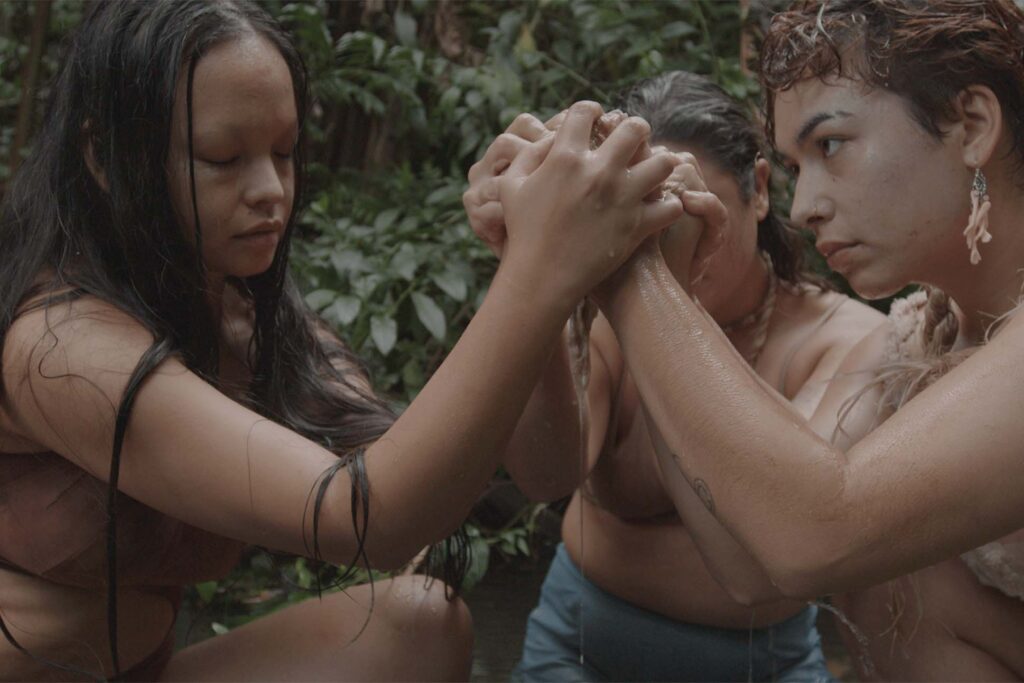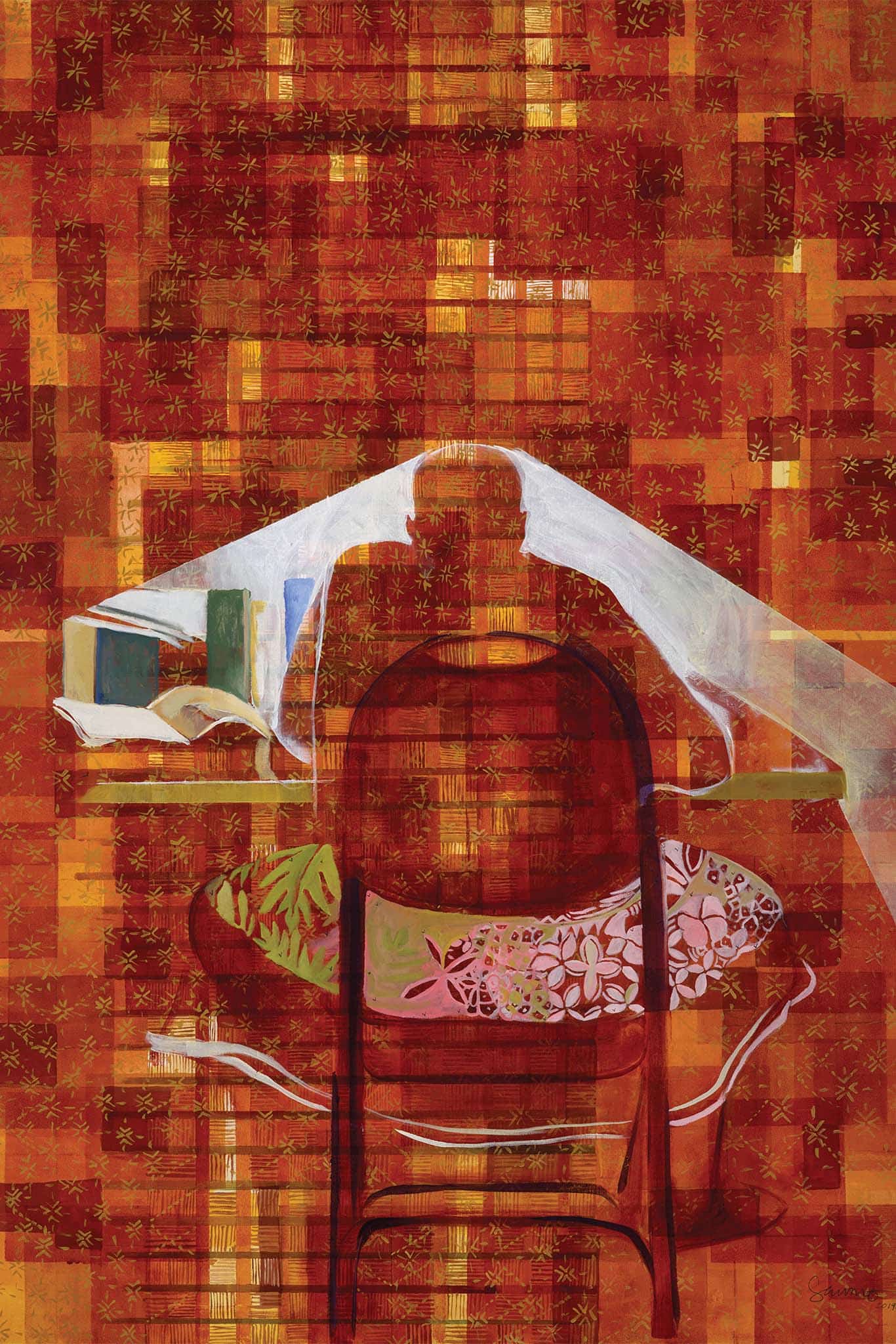Downtown Honolulu: Passion On Display
Featuring Saumolia Puapuaga
For Saumolia Puapuaga, life during the Covid-19 pandemic has been transformative. For all the pain and anxiety that quarantine and isolation initially brought, it was also an opportunity for the artist to truly be alone with himself. It meant coming to terms with “the deeper beauty of myself,” Puapuaga explains, without the trappings of curated social interactions and all their performative accoutrements: Saumolia, the artist; Saumolia, the queer man; Saumolia, the human.
What resulted was an idea for a dynamic art project that toed the line between fine art and performance. Puapuaga’s art tends to focus on the natural world around him, such as clouds colliding into each other above his home in Hau‘ula, or lush scenes of mountain and sea along Kahana Bay, just down the road. For this next project, he decided, he would look inward. He would paint what he knew best but sometimes found hard to face: himself. Dear Saumolia became a message addressed to his younger self. Through his work, Puapuaga envisioned guiding himself through the complicated experience of growing up as a queer person in the church.
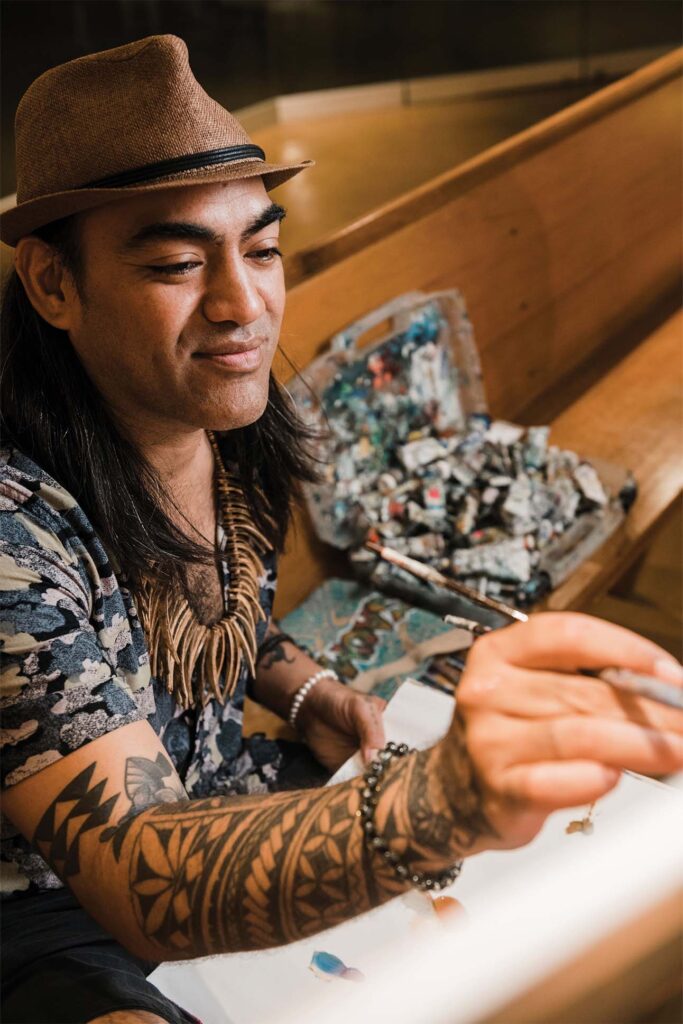
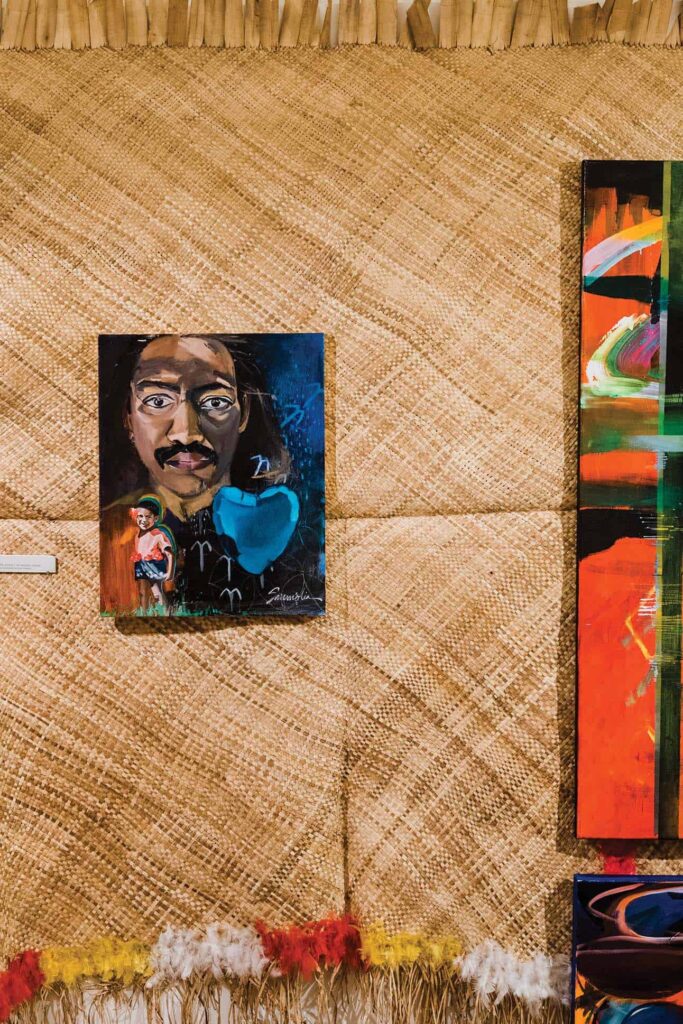
The project was originally intended for Pride month, but it was delayed by the onset of the pandemic in 2020. Reviving the idea two years later in his role as the inaugural artist in the Hawai‘i State Art Museum’s new Passion On Display residency program, he started with a portrait. “Looking at my features, insecurities, tackling everything that made me feel uncomfortable at one point or another,” Puapuaga says. “There are so many times I’d look away from the mirror because I didn’t like what I’d see.”
The residency included live painting sessions in the Passion On Display studio space, where visitors could watch him work on five personal pieces that addressed themes of identity, growth, and self-love. This type of public interaction, laying his own vulnerability bare, elicited some powerful reactions. “When people saw the naked truth and honesty I was longing for, they broke down, crying, thanking me,” Puapuaga recalls.
Post-residency, Puapuaga predicts he will continue to explore themes of authentic queer identity in future projects. For now, though, his heart and paintbrush miss those Hau‘ula clouds. “I shared a very emotional part of me,” he says. “I’m going to take some time outdoors.”
Chinatown: Arts & Letters Nu‘uanu
Featuring Susan Maddux
At a glance, the ten or so pieces from Susan Maddux’s exhibition, A Kind of Homecoming, displayed on the walls of Arts & Letters Nu‘uanu at the end of 2021, resemble a collection of kimono: graceful folds of ombré fabric fanning outward, ready to be draped over a woman’s shoulders. Together, the works in the exhibition could be her wardrobe, each garment pooling at her feet as she slips into her next persona.
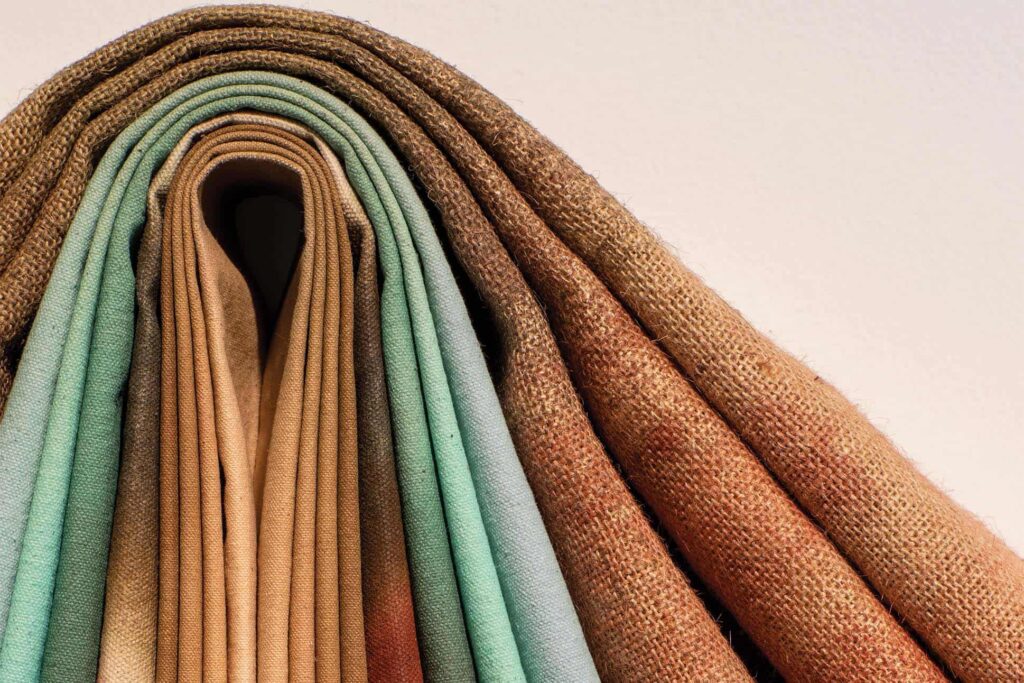
But Maddux’s inspiration for the show, created over the course of her residency at Arts & Letters Nu‘uanu, is much more abstract. “I tend to work very intuitively,” Maddux says. “In the making, it’s not about language. For me, it’s about a dialogue I’m having in the moment, like a feedback loop.” Perhaps that’s why A Kind of Homecoming is so gently stirring—enveloping and warm, like a cherished, distant memory of being held in someone’s arms. This endeavor marks the first time in Maddux’s career that she’s created and exhibited work in her childhood home of Hawai‘i. A kind of homecoming, indeed.
After graduating from Punahou School in 1987, Maddux moved to the continent, spending the next couple of decades painting, working in textiles, and building a life away from the islands—and yet, she never quite left them behind. “I made work about Hawai‘i even when I was in New York,” she says. “I needed to have that connection to Hawai‘i, especially in New York.”

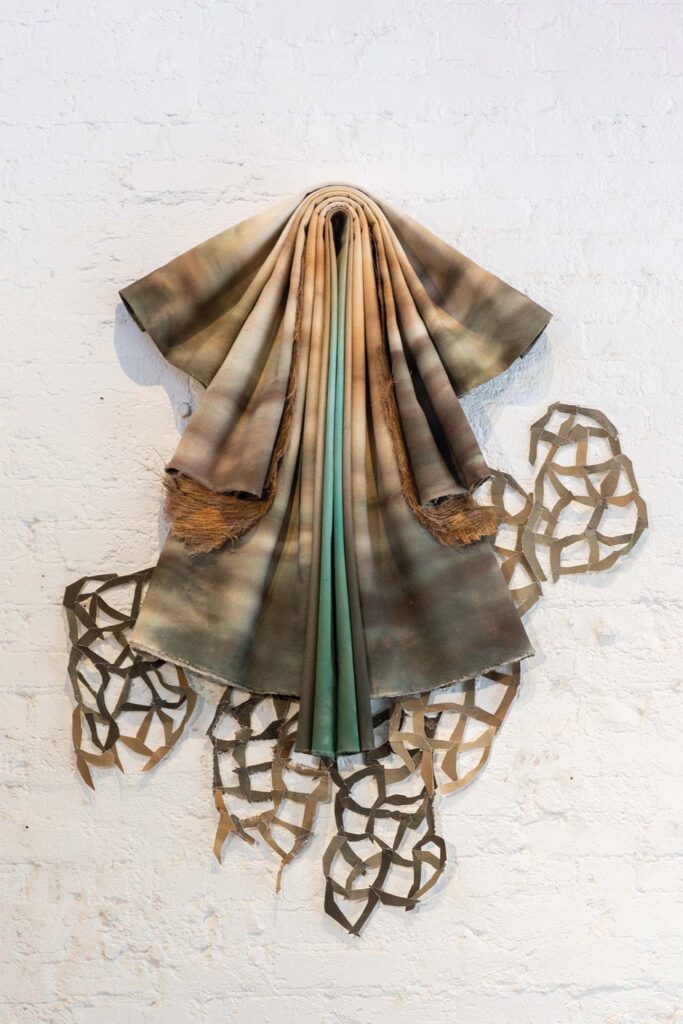
The Arts & Letters residency was both a literal and symbolic acknowledgement of that connection. It was through a long-time friend from high school that Maddux heard about the residency, and in her four weeks in Hawai‘i, she spent time forging new relationships with makers and creatives in the arts scene, even taking a workshop in natural dyeing techniques. She also explored her relationship with place: The show is an examination of three areas of O‘ahu that have personal significance for Maddux, including Mānoa, where she grew up, and the Kaiwi coastline, where she spent many hours exploring with her mother, who works at a preserve there.
But that month of introspective creation is just the beginning. “I wasn’t sure what I was going to find,” she says. “And what I found was I was barely able to scratch the surface of that inspiration.”
Mānoa: Trades A.i.R.
Featuring Tiare Ribeaux
“I just go straight to the rainforest,” says Oakland-based artist Tiare Ribeaux of her typical first stop upon returning home to O‘ahu. “That’s how I can feel connected to my ancestors. I don’t even see my family first. My family’s kind of scattered. That’s the deeper family.” Over thousands of miles of ocean, it’s the land that calls to her, serving as a reminder of who she is and where she came from.
These visits are not something Ribeaux takes for granted. After almost a decade of making a life in California’s Bay Area, her Hawai‘i family is now flung across the islands’ many nooks and crannies, leaving her no home base to come back to. Returning to the land of her ancestors, even for a short period of time, now comes with an increasingly prohibitive price tag as the cost of accommodations rise. After the pandemic hit, trips home were hard for a new reason: households were locked down tight. Guest rooms and friends’ couches were more difficult to come by.
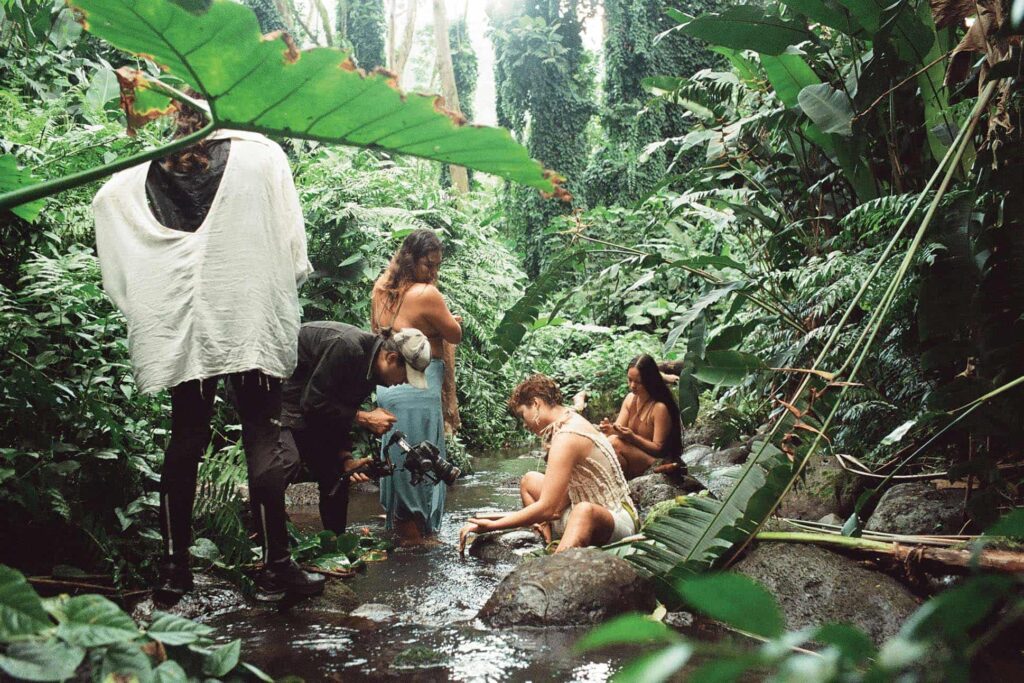
It’s why Trades A.i.R.—an artist-in-residence program in partnership with the Honolulu Museum of Art and the University of Hawai‘i at Mānoa’s Department of Art and Art History—was such a godsend for Ribeaux. The Mānoa-based residency offered valuable space (a house) and time (she was there for a month) in the islands to work, think, feel, and connect with nature and the community in the deep and meaningful way that Ribeaux’s work demands. In the past, her art has explored augmented reality and wearable bioplastics; her fascination with humankind’s connection to the environment remained a common theme throughout. At Trades, she had the opportunity to take that thematic thread and let it blossom in the context of her beloved Hawai‘i.
While working on her residency project, she connected with local creatives and collaborators who could bring her poetic visions to life. With Trades’ support, she also hosted workshops devoted to Native Hawaiian themes and narratives. “A big part of the work is just being here, meeting with the lāhui (community), seeing other artists,” Ribeaux says.
The project, an experimental film entitled Ulu Kupu, is a visual narrative about a mother and daughter who get separated while wandering through the rainforest. Expressionistic and symbolic, the film’s vignettes feature loosely defined characters—including anthropomorphized beings who guide the child back to her mother—but Ribeaux’s focus is more on themes than plots: the sacredness of water; the deep connection between land and people; finding one’s way home.
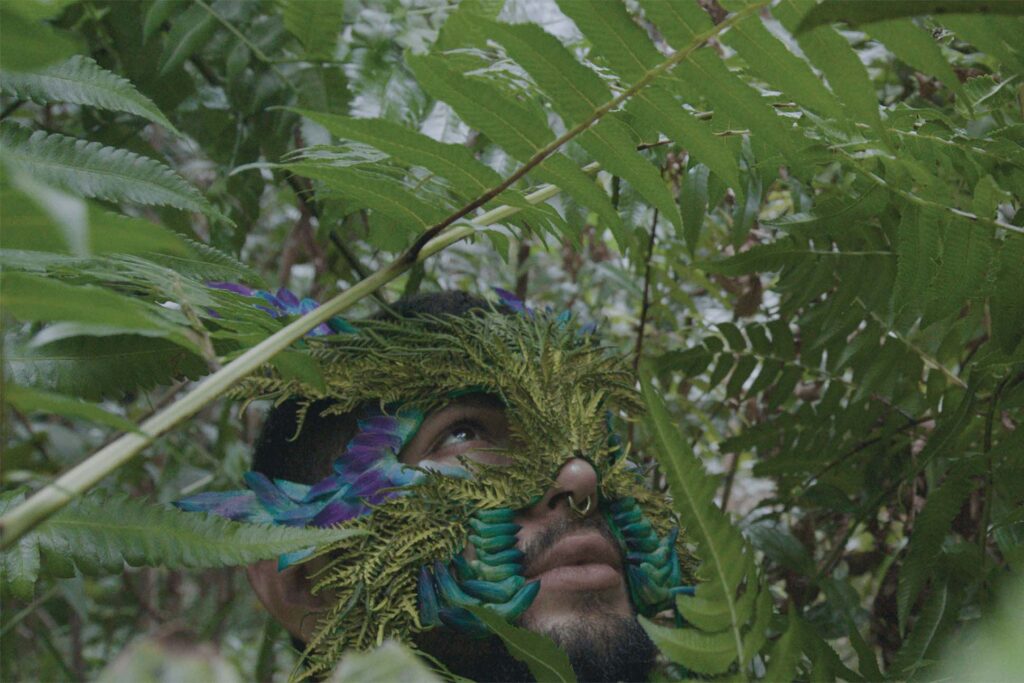
Over the course of his residency at the Hawai‘i State Art Museum, visitors could observe artist Saumolia Puapuaga at work.
A departure from Puapuaga’s usual paintings of island landscapes, Dear Saumolia included introspective self-portraits about self-love and queer identity.
Even after decades of living and working on the continent, artist Susan Maddux continues to make work about Hawai‘i.
For her residency project with Trades A.i.R., artist and filmmaker Tiare Ribeaux chose a setting that’s played a formative role in her life: the rainforest.
Featuring a cast and crew of local creatives, Ulu Kupu follows a mother and child who become separated in the depths of the forest.
